I’ve been writing about curiosity, a topic essential to learning, yet something I knew nothing about as a teacher.
This time, we’re at three recipes for cooking up curiosity.
Stumbling Onto An Interest
First, understand that people become can curious about anything – not just obviously “interesting” things like jet planes, dinosaurs, and robots – if we set it up correctly. In fact, curiosity researchers refer to two types of curiosity: state and trait.
- Trait curiosity: some people are simply (for whatever reason) more curious than others. They wonder more easily and more often. We can probably affect this, but it’s not our focus for now.
- State curiosity: anyone can become curious about something specific if it’s set up correctly.
We’re after this second one. How can we induce the state of curiosity in our students – even students who don’t seem naturally curious?
Inducing Curiosity
Here are three general recipes for creating curiosity I found in my readings:
- Information Gap
- Ambiguity
- Discrepancy
In all cases, remember the role of dopamine in curiosity. Our brains produce dopamine when we anticipate information. This anticipation activates our hippocampus, which can improve long-term memory.
1. Information Gaps
Information Gaps are all about purposefully hiding some information while making sure kids know enough to realize that they’re missing the information. Then, if they feel like the missing information is important, curiosity activates! I wrote about information gaps a bit earlier in this series.
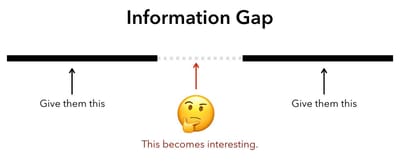
What Do You Think Will Happen Next?
You’ve leveraged information gaps every time you’ve asked “What do you think will happen next?” while reading to a kid. You highlighted that the child doesn’t know something.
If you talk more about that gap, and theorize together, the gap becomes more interesting. You’re drawing attention to the missing information and building anticipation. If you said, “Well, we’ll find out tomorrow!” you might even drive the child wild with curiosity.
Highlights magazine plays on the information gap with the classic “what’s different about these photos” feature. You know that you’re missing some information, and you can’t help but try to figure it out.
When I show this image in workshops (with adults!) we always have to linger a bit so everyone can solve the puzzle (or I get yelled at). Emphasizing missing information naturally activates our curiosity – even about things no one was curious about before.
Goldilocks and Wheel of Fortune
The size of the gap is important. Too big and it feels intimidating, a problem that can’t be solved.
Wheel of Fortune is a great illustration.
The board below has a big information gap. Maybe you can’t get it quickly enough to hold your interest. Without enough context, your curiosity remains dormant.
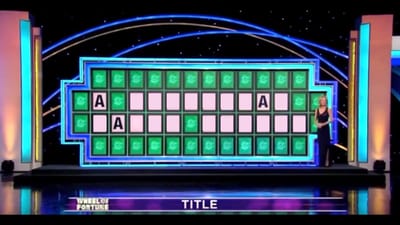
Tighten that gap by adding more information, and interest increases. Now this is solvable! I can close this gap! Dopamine fires up.
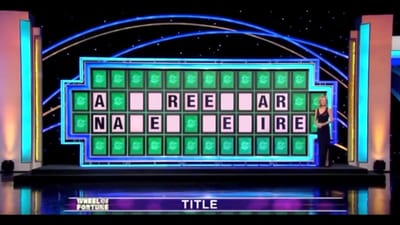
But, if the gap is too small, it won’t generate interest. It’s too obvious to conjure up curiosity.
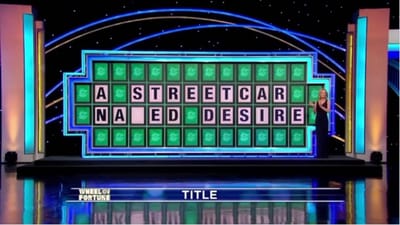
Think of it as a Goldilocks Problem – we need an information gap that’s just right. Finding this appropriately-sized gap for your students takes practice. Confident kids will push through bigger gaps, others will get discouraged more quickly. And it has nothing to do with intelligence, but rather a comfort with the unknown.
Some of our brightest kids are uncomfortable with uncertainty and addicted to easy. Planning for curiosity can help that.
Literally Hide Information
Try creating an information gap by straight-up covering part of a picture. Hidden information is naturally interesting. You get space to discuss, theorize, and wonder, giving curiosity room to grow.
I know you want to know what the sign says below! Let’s discuss!
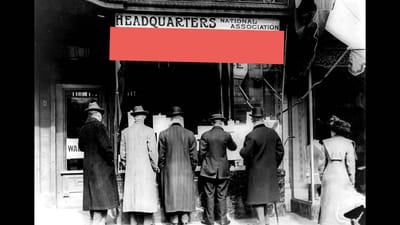
Show the information slowly and dramatically to increase interest. Don’t rush to reveal! For example, I’d only divulge part of the hidden information.
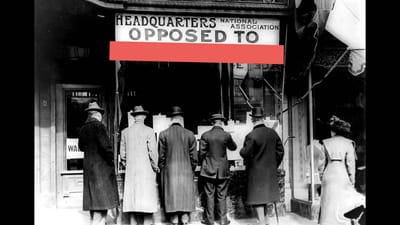
Your interest has increased! Maybe you have a theory. You’d love to know if it’s right. You have dopamine in your brain!
Maybe I’ll wait until tomorrow to show you the rest… or you could click here.
I’ve got a whole bunch of these “notice and wonder” examples at Byrdseed.TV.
A Gap In The Middle
Your instinct may be to hide the “answer” or the last bit of information. But what if you showed the answer first and obscured the middle?
Movies do this all the time: Fight Club, American Beauty, Saving Private Ryan, The Prestige, Mission Impossible III, Pan’s Labyrinth, and even Citizen Kane give away their endings first, then make you wonder how will we get there!?
You can do this in social studies by giving away some tidbit near the end of a story and invoking curiosity:
- Boys and girls, what if I told you that Washington and Jefferson end up as political enemies? Let’s find out why!
- Look at how large Rome has become! But I want to let you know that, soon, Rome will begin putting some bad leaders in charge…
- Lewis and Clark won’t end up finding the Northwest Passage, but along the way they’re going to find something some people think is even better! What do we think they might find?
Want to make the middle interesting in math? Robert Kaplinsky runs OpenMiddle.com, a collection of math problems with intriguing middles. The actual answer isn’t the most interesting thing, but rather the multiple paths to get there.
2. Ambiguity
A second technique to develop curiosity is ambiguity. When we’re not quite sure about something, curiosity naturally activates. Nothing draws us in like an unsolved mystery with multiple possible interpretations.
A story with ambiguity is more interesting than one that is perfectly clear. An ending that’s open to interpretation leaves us talking and theorizing. Inception‘s gloriously ambiguous ending makes us question the whole movie – and line up to see it again.
Ambiguous characters, like Severus Snape, get us wondering and become fan favorites.
Want ambiguity in math? Check out Which One Doesn’t Belong for problems with no clear answer and lots of discussion.
Visual Ambiguity
Open a unit by exploring a purposefully unclear visual. I’ve used (and seen others use) these images’ inherent ambiguity to get kids wondering:
Of course, the key is to not explain anything immediately, but let students’ curiosity build. Then you’ve got momentum for the whole unit.
3. Discrepancy
Our third recipe is to create a discrepancy. Renee Baillargeon calls this a “violation of expectations” (a phrase I love). It involves a surprising result, something that goes against the pattern.
Darth Vader’s Big Secret™ is a perfect example of violating expectations. It goes against everything we know and expect about Star Wars.
There are so many wonderfully unexpected pieces of information that we accidentally gloss over. We, as teachers, are so used to them that we forget that they’re surprising!
It’s easy, once you’ve seen a movie, to forget how shocking a twist was, after all. To you it’s obvious. [See the curse of knowledge for more on this problem.]
Approach content with a beginner’s mind. What is the most surprising thing? What goes against expectations?
Surprises in Math
Here are a few discrepancies in math:
- Studying exponents? The power of zero is a great discrepancy – one which would lead my students to ask about negative exponents almost every year.
- Multiplying by decimals makes a smaller product – something new to students.
- Subtracting by more than the starting number has the discrepancy of taking us into negative numbers! This should be surprising!
- The formula for the area of a triangle is surprising! Why is that 1/2 there?
- Finding π in the formula for the area of a circle and perimeter should be surprising! Why is it there? Why haven’t we seen it before?
Often we blow right past these interesting surprises rather than savoring them. Slow down, highlight the unexpected, and you get that dopamine flowing!
Opening With A Discrepancy
Discrepancies are nice entry points into units or lessons. The surprise lingers, making the rest of the content more interesting. You’ll see this in film all the time: an opening scene with no explanation that gets us curious. Every episode of every Law and Order starts with a confusing cold-open to get us hooked.
This article about caffeine is such a wonderful illustration of discrepancy. Just read the headline, and I know you’ll suddenly have a bunch of questions. What a great start for a math investigation (in fact I did just this at Byrdseed.TV).
So, what might surprise your students? What might violate their expectations and activate their curiosity? Make this the focus of your lessons.
Conclusion
So we have three general approaches to creating curiosity:
- Information Gap: Provide some context, but hide essential information.
- Ambiguity: Provide all information, but create uncertainty or multiple right answers.
- Discrepancy: Surprise your students! Violate their expectations. Break a pattern.
And this wraps up my series on curiosity… for now!
Resources
Here are some of the resources I used to satisfy my own curiosity about curiosity:
- The Hungry Mind (Book)
- Susan Engel’s presentation at Williams College (video)
- Children’s Need To Know A fantastic article if you can get access.
- Curiosity Prepares the Brain for Better Learning (Article)
- Matthias Gruber explains his research on dopamine and curiosity (Video)
